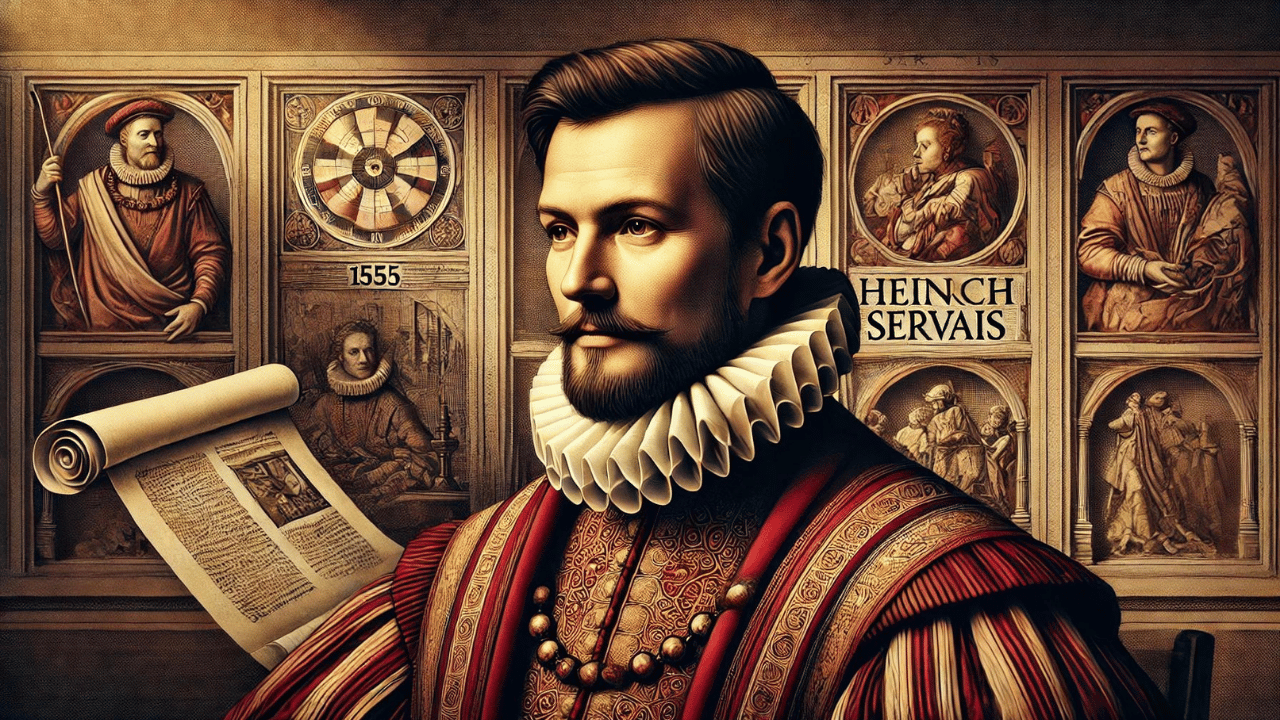Introduction
The 1555 portrait of Servais germany is a remarkable example of 16th-century German portraiture. Created during the Renaissance, this artwork reflects not only the artistic style of the period but also provides insight into the life and status of its subject. The painting serves as a historical document that encapsulates the cultural and social dynamics of its time.
Historical Context
The year 1555 was significant for Germany and Europe. It was a time marked by the Protestant Reformation, which was transforming the religious landscape and influencing various aspects of life, including art. Artists began to embrace humanism, focusing on individuality and the unique traits of their subjects. This shift allowed portraiture to flourish, serving as a means for individuals to express their identity and status.
The Artist: Lucas Cranach the Elder
The 1555 portrait of Servais is attributed to Lucas Cranach the Elder, a prominent figure in the Northern Renaissance. Cranach was born in 1472 and became a court painter for the Electors of Saxony. His work is characterized by vibrant colors, intricate detail, and an ability to convey the personality and emotions of his subjects.
Cranach’s Artistic Style
Cranach’s style combined realism with a sense of idealism. He was skilled in capturing not only the likeness of his subjects but also their character and social standing. His portraits often included:
- Rich Colors: Cranach used a palette of deep, vibrant hues that brought life to his subjects.
- Detailed Textures: His attention to the details of fabrics and accessories showcased the wealth and status of the individuals portrayed.
- Expressive Faces: The facial expressions in his works reveal a range of emotions, inviting viewers to connect with the subject on a personal level.
Description of the 1555 Portrait of Servais Germany
The 1555 portrait of Servais presents its subject with a striking level of detail and artistry. The painting captures Servais in a three-quarter pose, allowing for a full view of his attire and features.
Visual Features
- Attire: Servais is dressed in luxurious fabrics, indicative of his social status. The clothing features intricate patterns and rich colors, highlighting the fashion of the time. The attention to detail in the fabric texture adds depth to the portrait, making it visually appealing.
- Facial Expression: Servais’s expression is thoughtful and composed, suggesting confidence and introspection. His eyes engage the viewer, drawing them into the narrative of his life and experiences. The subtle details in his expression reveal a man of importance and intelligence.
- Background: The background of the portrait is typically simple, allowing the focus to remain on Servais. It may include soft, muted tones that complement his attire without detracting from the subject.
Symbolic Elements
The portrait is rich in symbolism:
- Clothing as Status: The luxurious attire worn by Servais symbolizes his wealth and high standing in society. During the Renaissance, clothing was a primary indicator of social status, and this portrait captures that aspect effectively.
- Pose and Expression: The pose and expression of Servais convey a sense of authority and self-assuredness, reflecting his role in society. The way he holds himself speaks volumes about his character and life experiences.
Significance of the Portrait
The 1555 portrait of Servais is significant for several reasons:
- Cultural Insight: The portrait offers a glimpse into the cultural values of 16th-century Germany. It reflects the importance placed on individual identity and social status during this period.
- Artistic Achievement: This work exemplifies the high level of skill achieved by artists like Cranach. The combination of realistic detail and expressive quality set a standard for future portrait painters.
- Historical Record: The portrait serves as a historical document, providing information about the fashion, social norms, and artistic practices of the time. It helps historians and art enthusiasts understand the dynamics of 16th-century German society.
Conclusion
The 1555 portrait of Servais is more than just an artistic achievement; it is a window into the past. Through its detailed representation and thoughtful composition, it invites viewers to reflect on the life and times of its subject. Lucas Cranach the Elder’s masterful handling of color, texture, and expression ensures that this portrait remains a significant piece of art history, encapsulating the essence of the Renaissance and the individuality of its subjects. The legacy of the 1555 portrait of Servais continues to resonate, reminding us of the enduring power of portraiture to capture the human experience.
Related Article: Understanding SSIS 950: A Detailed Overview
FAQs About the 1555 Portrait of Servais
1. Who created the 1555 portrait of Servais?
The 1555 portrait of Servais was created by Lucas Cranach the Elder, a prominent artist of the Northern Renaissance known for his distinctive style and attention to detail.
2. What is the historical significance of the portrait?
The portrait is significant as it reflects the cultural and social dynamics of 16th-century Germany during the Protestant Reformation. It showcases the importance of individual identity and social status in Renaissance art.
3. What does the portrait depict?
The portrait depicts Servais in luxurious attire, emphasizing his social status. His expression and posture convey confidence and introspection, inviting viewers to engage with his character.
4. What artistic techniques did Cranach use in the portrait?
Cranach employed vibrant colors, detailed textures, and expressive facial features in the portrait. His skill in capturing the likeness and personality of his subjects was a hallmark of his artistic style.
5. Where can I see the 1555 portrait of Servais?
The 1555 portrait of Servais is housed in various art collections, and its location may vary based on exhibitions. You can check with local museums or art galleries for viewings, or search online collections for images and details.
6. What does Servais’s attire signify?
Servais’s attire in the portrait signifies his wealth and high social standing. During the Renaissance, clothing was a key indicator of social status, and the luxurious fabrics and intricate designs illustrate his importance in society.
7. How does the portrait reflect the values of the Renaissance?
The portrait reflects Renaissance values by emphasizing individuality, humanism, and the significance of personal identity. It highlights the shift in art towards more realistic representations of people and their emotions.
8. What materials were used to create the portrait?
Cranach likely used oil paint on wood for the 1555 portrait of Servais, which was a common practice among Renaissance artists. This medium allowed for rich color depth and intricate detailing.






